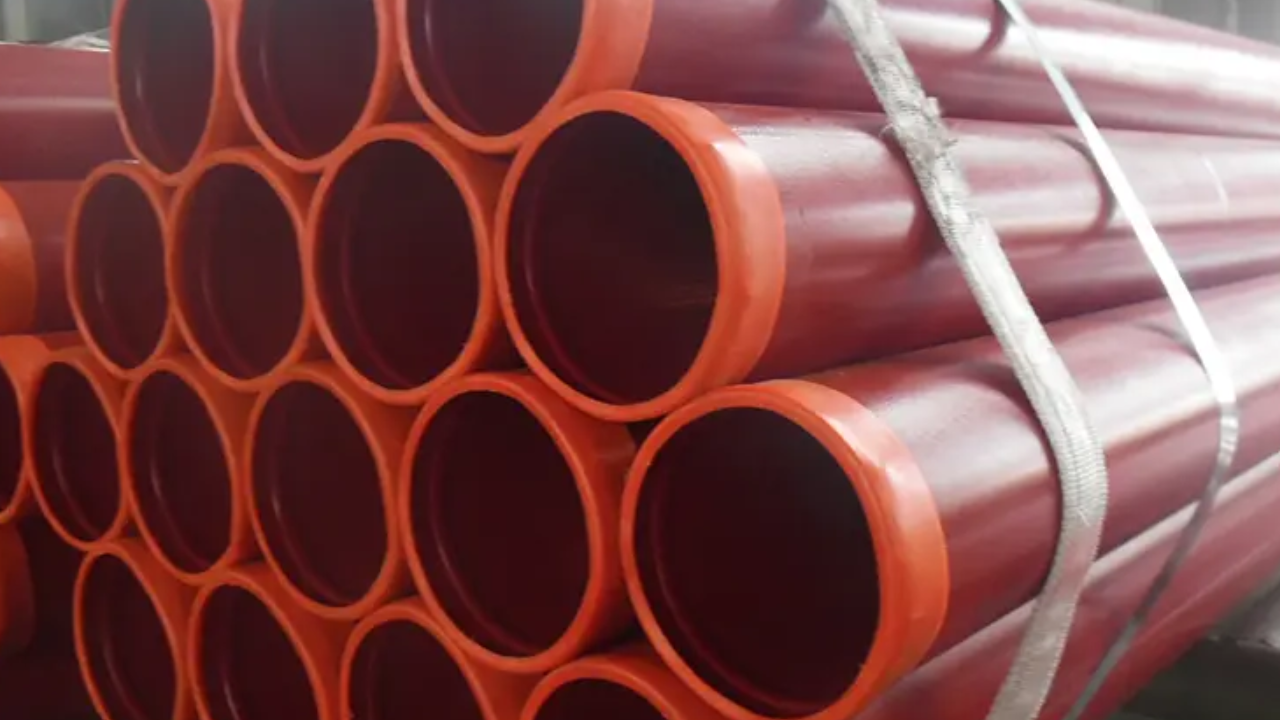The Grade B designation in ASTM A795 denotes the precise grade of steel used in the manufacture of these pipes. The standard outlines key qualities, mechanical properties, coating requirements, dimensions, and testing processes to ensure the quality, safety, and compatibility of the pipes for their intended application.
ASTM A795 Grade B is designed to endure extremes of pressure and temperature while transporting water and other fire-extinguishing liquids as well. These pipes are critical in improving fire safety in buildings and industrial sites. Compliance with the ASTM A795 Grade B requirements is critical for any project needing protection from fire applications to assure the reliability and efficiency of the fire security systems.
How can I ensure that ASTM A795 Grade B standards are met?
For complete ASTM A795 Grade B compliance, purchase pipes from recognized manufacturers who conform to the standard’s standards during the manufacturing process. Furthermore, proper examination and testing of the pipes before being put in are required to ensure their durability and conformance to the norm.
Are ASTM A795 Grade B pipes suitable for other applications apart from fire protection?
While ASTM A795 Grade B pipes are primarily intended for use in fire prevention systems, they may also be applied in other applications if their properties fulfill the specifications. To determine the suitability of Grade B pipes for specific uses other than fire protection, it is necessary to confer with engineers as well as business specialists.
ASTM A795 Grade B Pipe Testing Criteria
The ASTM A795 standard includes several test requirements for Grade B pipes in order to assure their quality, integrity, and appropriateness for use in fire prevention systems. The primary ASTM A795 Grade B pipe test requirements are as follows:
The hydrostatic test
The hydrostatic test is used to determine the pipe’s ability to bear inside pressure without leaking or exploding. The pipe is filled with water and tested for a hydrostatic pressure that surpasses the typical working pressure during this test. The standard specifies the test pressure and duration. During the test, the pipe must not show any evidence of leakage, distortion, or failure.
Nondestructive Electric Test
The Eddy Current Test, also known as the nondestructive electric test, is used to discover upper or deep faults or defects in the pipe. An electrical current is passed through a coil to produce eddy currents in the material during the test. Any changes in the material’s electrical characteristics caused by faults are detected, allowing possible problems to be identified.
Flattening Test
The flattening test determines the pipe’s ductility and the quality of the weld. A piece of the pipe is pushed down until both sides walls come into line. The pipe’s potential to sustain deformation caused by plastic without cracking or presenting apparent evidence of failure is determined by the test.
Bending Test
The bending test determines whether the pipe can tolerate stretching without breaking or sustaining harm to the structure. A segment of pipe is bent to a specific angle, and it must meet the standard’s bending criteria without showing any evidence of damage.
Tensile Test
The tensile test determines the pipe material’s compressive and rebound power. It guarantees that the pipe has the mechanical qualities required to endure pressure and stress over its service life. The mechanical qualities of the pipe samples are measured by subjecting them to tension until they crack.
Weight and Dimensional Inspection
Pipes are measured determined, and flattened to verify they fit the appropriate requirements and are ready for delivery. The pipe’s weight is an important aspect when assessing its strength and reliability for the purpose it was designed for. The dimensional evaluation examines the pipes’ outer diameter (OD), inner diameter (ID), and wall thickness.
Conclusion
ASTM A795 Grade B is the accepted requirement for welded and seamless black and hot-dipped galvanized steel tubes used in fireproofing systems. The Grade B label denotes the steel quality applied in the fabrication of these pipes. The standard specifies the material composition, mechanical qualities, coverings, measurements, and testing processes required to ensure the reliability, security, and suitability of the pipes for fire prevention operations.

